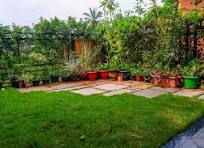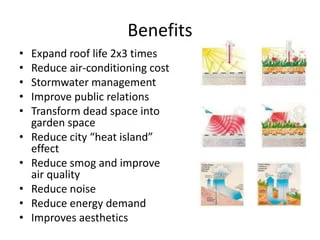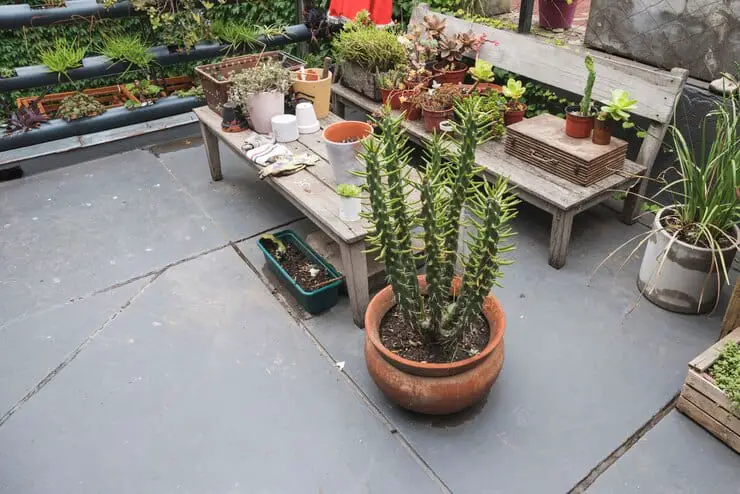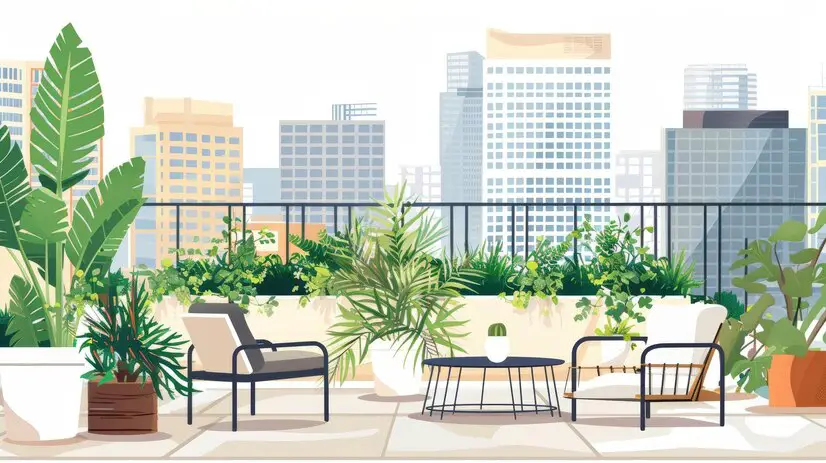Nature Gardening on the Terrace
Gardening on Terrace -The need of an hour
Growing plants in containers or raised beds on a terrace, balcony, rooftop, or other outdoor area with little or no access to ground soil is known as terrace gardening. Plants in terrace gardens are typically cultivated in containers that are filled with soil or another growing medium. Drip irrigation systems or hand-held watering cans are frequently used for fertilization and irrigation. Vegetables, herbs, flowers, small trees, and shrubs can all be grown in terrace gardens, which can range in size from little to huge.
Those who live in cities or have little outdoor space often choose terrace gardening as it’s a practical way to cultivate their own plants and reap the benefits of gardening in a small area. It may also be a desirable choice for those who like the task of cultivating and tending to plants, or who like to add a decorative or practical aspect to their outside area.

Terrace Gardening Benefits and Drawbacks
Terrace gardens can have a variety of benefits and drawbacks, depending on the particular situation and the gardener’s personal circumstances. These are a few possible benefits of terrace gardens.
Benefits:

Terrace Nature gardens are a smart way to make the most of small outdoor spaces like rooftops or balconies. They offer more privacy, create a peaceful retreat from the hustle and bustle, and help purify the air, which is especially useful in cities with pollution. Gardening also has mental health benefits, reducing stress and improving mood. Plus, a well-maintained terrace garden can boost the value of your property, making it more attractive to buyers or renters.
Drawbacks:
Limited sunshine: Depending on where the terrace is located, it may only receive a little amount of sunlight, which might make it challenging to cultivate some kinds of plants.
Cost: Establishing a terrace garden can be costly because it might call for the purchase of planting pots, soil, and plants in addition to any necessary structural adjustments.
Maintenance: Terrace gardens need to be watered and maintained on a regular basis, which can be labor- and time-intensive.

What Benefits Can One Offer from Nature Terrace Gardening?
Terrace gardens are a wonderful way to make the most of limited outdoor spaces, like rooftops or balconies, especially in urban settings where yards are scarce. By creating a garden on a terrace, you can turn an underused space into a green oasis. This is a clever solution for people who love gardening but don’t have a traditional backyard. Not only do you get to grow plants, herbs, or flowers, but you also use the available space in a more functional and attractive way.
One of the major benefits of a terrace garden is the added privacy it provides. In densely populated areas, homes are often close to one another, and finding a quiet, private spot outdoors can be challenging. A terrace garden acts as a natural shield from neighboring buildings or noisy streets, offering a secluded retreat where you can unwind and enjoy some peace and quiet.
Another advantage of having a terrace garden is the positive impact it can have on air quality. Plants are natural air purifiers. They absorb carbon dioxide and release oxygen, which helps reduce pollution levels, making the air cleaner and healthier. This is especially helpful in cities where pollution is a common issue, and having plants around can improve the quality of the air you breathe.
In addition to these physical benefits, terrace gardening is also great for mental well-being. Studies show that being around plants and engaging in gardening activities can lower stress, improve mood, and contribute to better overall mental health. A terrace garden provides a calm space where you can escape the pressures of daily life, relax, and reconnect with nature.
Finally, a well-maintained terrace garden can increase the value of your home. It adds visual appeal, making the property more attractive to potential buyers or renters, which can be a real asset if you ever decide to sell or lease your space.
References for Terrace Gardening:
- Books:
- “The Urban Gardener” by Madeline Crosfield explores innovative ways to grow plants in limited spaces, including terraces.
- “Terrace and Balcony Gardening” by Supriya Gupta offers detailed guidance on setting up gardens in compact urban spaces.
- Online Sources:
- The blog “The Spruce” provides comprehensive advice on terrace garden designs and plant selection.
- Websites like Gardeners.com and Better Homes & Gardens offer tutorials on terrace gardening techniques, including irrigation and soil management.
- Research Papers:
- “Urban Terrace Gardening: Enhancing Green Spaces in Cities” explores the environmental benefits of growing plants on terraces.
Case Study of a Terrace Garden: A Pathway to Sustainable Urban Living
As urbanization accelerates, cities are expanding vertically rather than horizontally, leaving limited space for conventional gardening. Terrace gardening has emerged as a popular solution for urban residents to cultivate plants, vegetables, and fruits within their own living spaces. This case study delves into the journey of an urban family who transformed their unused rooftop into a thriving terrace garden, contributing to their household’s food security, improving air quality, and enhancing their quality of life.

The Inspiration
The family in this case study resides in a bustling metropolitan area where space is scarce, and access to fresh, organic produce is often expensive. After attending a community workshop on urban gardening, they were inspired to make use of their 500 square feet of unused rooftop space. Their initial motivation was to grow fresh vegetables for personal consumption, reduce their grocery bills, and contribute to environmental sustainability.
Planning the Terrace Garden
The first step in establishing the terrace garden was careful planning. The family consulted with gardening experts to determine the types of plants that would thrive in their environment, the layout of the garden, and the materials needed to set up the infrastructure. Factors such as sunlight, water availability, and wind exposure were critical in deciding the placement of the garden beds.
They chose to start with a mixture of herbs, leafy greens, and seasonal vegetables such as spinach, tomatoes, lettuce, and cucumbers. Additionally, they allocated space for flowering plants to attract pollinators and improve the aesthetic appeal of the garden.
Infrastructure and Materials
The family decided to implement a lightweight garden to avoid overloading their roof’s structural capacity. They used lightweight containers made of recycled plastic, clay pots, and fabric grow bags. Raised beds were built using wooden planks and covered with a waterproof sheet to prevent water seepage that could damage the roof.
To ensure proper drainage, they installed a drip irrigation system connected to a rainwater harvesting setup. This not only optimized water use but also reduced their dependency on the municipal water supply.
The soil used was a mixture of garden soil, compost, and organic fertilizers. They also incorporated vermicomposting to recycle kitchen waste into nutrient-rich compost, minimizing their carbon footprint.
Challenges Encountered
One of the significant challenges faced during the initial stages was the harsh summer heat, which resulted in water loss and wilting plants. To combat this, they installed shade nets and mulched the soil to retain moisture. Another issue was pest control, as the urban environment attracted different types of insects that could harm the plants. The family decided to use organic pest repellents like neem oil and garlic sprays to keep their produce chemical-free.
Time management was another hurdle. Maintaining the garden required regular watering, pruning, and monitoring for pests, which initially seemed time-consuming. However, over time, the family learned to streamline these tasks, scheduling their garden care during early mornings or late evenings when temperatures were cooler.
Benefits Realized
Over the course of a year, the terrace garden began to flourish, providing a steady supply of fresh, organic vegetables. The family reported a reduction in their grocery bills, with approximately 30-40% of their produce now coming from their garden. They also noted an improvement in their diet, as the availability of fresh vegetables encouraged them to eat healthier meals.
Beyond the financial and health benefits, the family experienced intangible advantages. The garden became a source of relaxation and stress relief, offering a peaceful retreat in the middle of the chaotic urban environment. It also fostered a sense of accomplishment, as they saw the fruits of their labor grow and thrive.
Environmentally, the terrace garden contributed to better air quality in the vicinity by absorbing carbon dioxide and releasing oxygen. The rooftop garden also helped in lowering the indoor temperature of their home by acting as insulation, reducing their energy consumption for air conditioning.
Future Plans
Encouraged by their success, the family plans to expand their terrace garden further by incorporating more vertical gardening techniques and growing fruit-bearing trees such as lemons and guavas. They also aim to educate their neighbors and the community about the benefits of urban gardening through workshops and social media.
Conclusion
The case study of this terrace garden illustrates how urban households can make the most of their limited space to grow food, contribute to sustainability, and improve their overall well-being. While the journey required careful planning, consistent effort, and overcoming challenges, the rewards have been well worth it. As more urban dwellers embrace terrace gardening, cities can move closer to achieving a sustainable and green future, one rooftop at a time.
